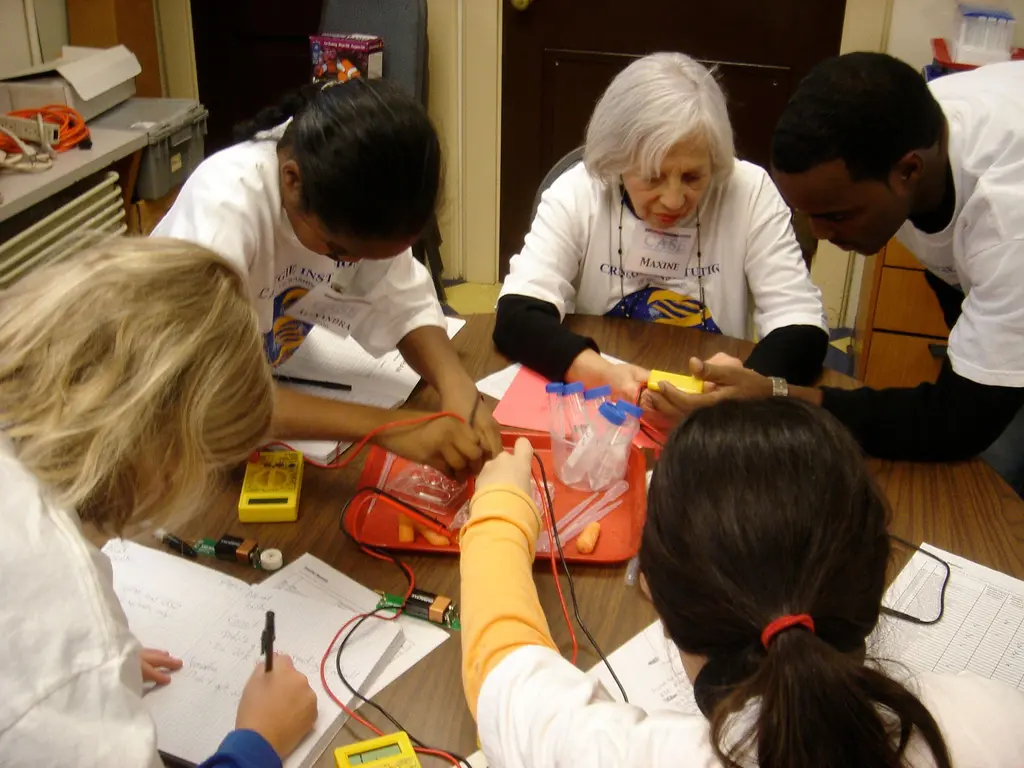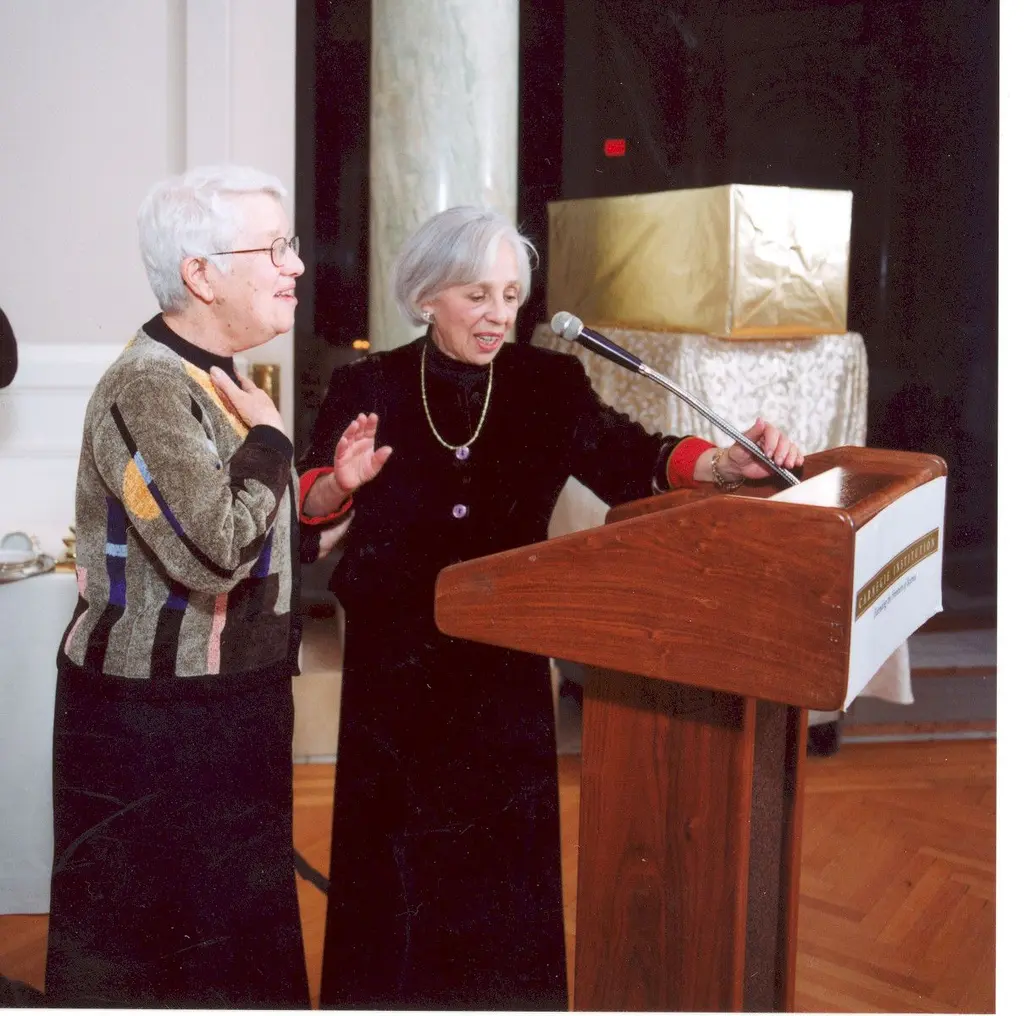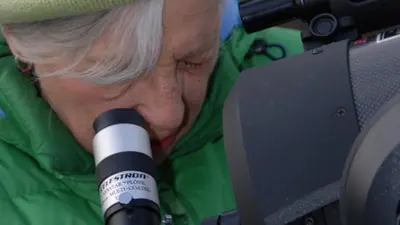
Washington, DC— Carnegie Science President Emerita Maxine Frank Singer, a National Medal of Science recipient who made major contributions to the scientific enterprise, in both her groundbreaking research and her tireless advocacy for access and inclusion in STEM fields, died July 9 at her home in Washington, D.C., after a battle with chronic obstructive pulmonary disease and emphysema. She was 93.
As Carnegie Science’s eighth president, Singer changed the face of the organization, not only as the first woman to serve in the role, but also by spearheading new scientific and educational initiatives with far-reaching impacts.
Singer financed and oversaw the construction of the twin 6.5-meter Magellan telescopes at Carnegie Science’s Las Campanas Observatory in Chile—elite facilities that have enabled two decades of breakthrough astrophysics research. As part of the organization’s centennial celebrations, she also created Carnegie Science’s first new research department in more than 80 years, enabling the organization to play a founding role in establishing the field of global ecology within the scientific community.
“The impact of Maxine’s tenure on our organization and on the entire U.S. scientific enterprise was remarkable,” said Carnegie Science President Eric D. Isaacs. “Her leadership laid the groundwork for our institution to move into a second century of scientific excellence. Maxine’s forethought and vision for Carnegie Science will be felt for decades to come.”
Singer’s career represented a rare trifecta of excellence in scientific research, leadership, and public advocacy. In 1992, President George H.W. Bush awarded her the National Medal of Science in recognition of “her outstanding scientific accomplishments and her deep concern for the societal responsibility of the scientist.”
Born in New York City on February 15, 1931, Singer attended public schools in Brooklyn, where her interest in science was first encouraged. She went on to major in chemistry and minor in biology at Swarthmore College and to earn her Ph.D. in biochemistry from Yale University. Her graduate school mentor urged her to specialize in nucleic acid research, which was at the time a rare discipline.
Singer’s research career spanned an enormous shift in the biological sciences thanks to the emergence of the field of molecular biology, in which she played a forefront role.
In 1956—only three years after the double helix structure of DNA was revealed by the efforts of Watson, Crick, and Franklin—she joined the Laboratory of Biochemistry at the National Institutes of Health, where she was part of a small group in the emerging field of nucleic acid research. Her work there with Leon Heppel on the chemical structure and synthesis of RNA and DNA laid the groundwork for Marshall Nirenberg and Heinrich Matthaei to decipher the genetic code in the 1960s.









Maxine Singer examines data in the lab in 1989. Photograph by Bruce Reedy Photography.

Maxine Singer works with STEM students as part of the First Light program she founded

Maxine Singer learns about seismometers from Diana Roman

Maxine Singer looks through a telescope during an outreach activity.

Richard Meserve, Eric Isaacs, and Maxine Singer at a book signing event for Robert Hazen

Maxine Singer Barbara McClintock and Nina Fedoroff

Vera Rubin and Maxine Singer

Maxine Singer visits Carnegie's former Department of Plant Biology
In 1975 she became chief of the Nucleic Acid Enzymology Section at the National Cancer Institute’s Laboratory of Biochemistry, which she went on to lead from 1980 to 1987. During this time, she made one of her signature impacts on the field with her discovery that a DNA sequence called LINE-1, which is repeated and interspersed throughout the human genome, is capable of “jumping” around within a chromosome, causing mutations that can lead to genetic diseases.
In 1988, Singer was elected Carnegie Science president by the Board of Trustees while maintaining her association with the National Cancer Institute as Scientist Emerita.
Her personal experiences with discrimination fed a strong desire to use her new platform to improve access to scientific training for women and other historically underrepresented groups. During her tenure as Carnegie Science president, she created several educational and outreach programs in the nation’s capital. Together, the First Light free Saturday science school and Carnegie Academy for Science Education (CASE) have served thousands of D.C. students and teachers.
“Even after her retirement in 2002, Maxine worked closely with CASE and the D.C. branch of the Simons Foundation program Math for America for more than a decade. Her unstoppable energy provided generations of D.C. students and teachers with access to hands-on science experience and high-quality STEM education resources,” said Deputy for Science John Mulchaey. “Her work has made a lasting impact on the D.C. educational community.”
Additionally, she launched the popular Capital Science Evening lecture series, now in its 35th season, which was designed to make science accessible and exciting to the D.C.-area public. Over the years, the program has provided a platform for hundreds of speakers from preeminent scientists to early career researchers breaking new ground in their fields. Recent expansion to a hybrid mode has vastly increased the reach of the series, enabling viewers from around the world to attend the talks.
Throughout her career, Singer was also a fearless spokesperson and leader on matters of science policy, frequently being called to testify before Congress, particularly on issues relating to stem cell research and human cloning.
“Science is not an inhuman or superhuman activity,” she said. “It's something that humans invented, and it speaks to one of our great needs--to understand the world around us.”
In addition to the National Medal of Science, Singer’s multifaceted contributions were recognized with a host of honors. She received the Association for the Advancement of Science’s William D. Carey Lectureship Award for Leadership in Science Policy in 1996, the National Science Board’s Vannevar Bush Award in 1999—becoming the first woman to do so—and the National Academies of Science, Engineering and Medicine’s Public Welfare Medal. A charcoal drawing of her is in the collection of the National Portrait Gallery in Washington, D.C.
Singer is survived by her husband, Daniel Morris Singer, their four children—Amy, David, Ellen, and Stephanie—and grandchildren.
